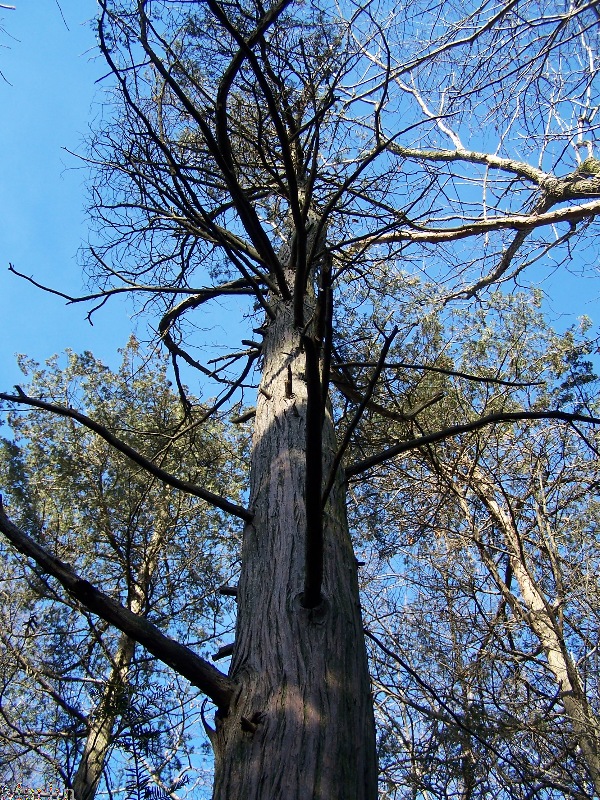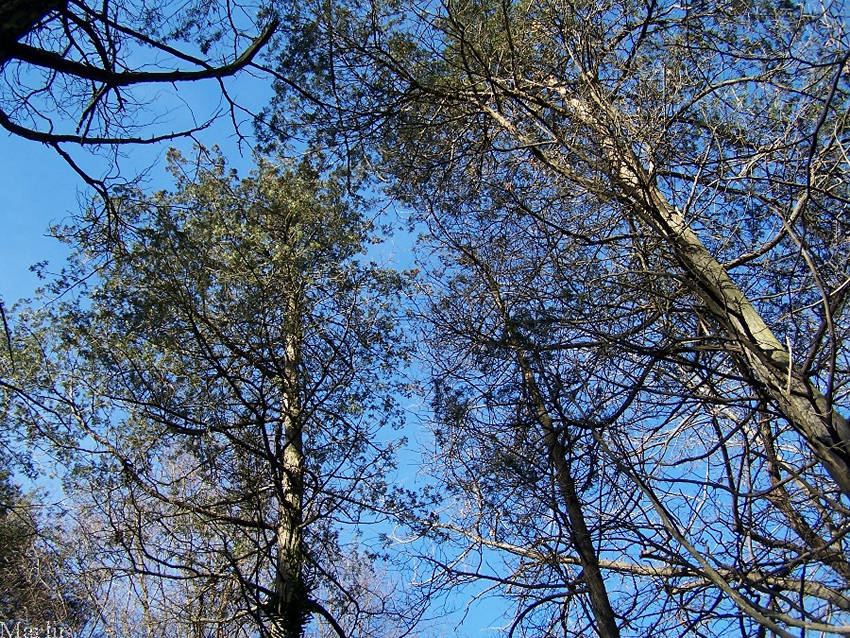Atlantic White-Cedar – Chamaecyparis thyoides
Atlantic white cedar is one of only six species in this genus. Only three of the six are native to the continent, and two of them are west coast species. This leaves Atlantic white cedar as the only representative in the East, where it occurs in a narrow band along the Atlantic coast. Atlantic white cedar is an evergreen with scaly leaves that occur in a flat fern-like appearance. This species usually grows in very dense, solid stands, and has small rounded cones.
 This Morton Arboretum specimen is 85 years old
This Morton Arboretum specimen is 85 years old
Ancient white-cedar logs buried in swamps have been mined and found well preserved and suitable for lumber. Pioneers prized the durable wood for cabin logs, floors and shingles. During the Revolutionary War, the wood was burned for charcoal for gunpowder.
 This is a dense stand of Atlantic white-cedar at the Morton Arboretum
This is a dense stand of Atlantic white-cedar at the Morton Arboretum
Atlantic white-cedar provides cover for a variety of birds and mammals. The yellow-throated warbler, prairie warbler, and hooded warbler nest close to the ground in Atlantic white-cedar stands. Cavities provide nesting areas for the pileated woodpecker.
Due to the dense stands which white cedar often creates, it should not be surprising that 8-9 million seeds per acre may be disbursed in a decent seed crop. These seeds are winged and very light, and may be carried long distances by strong winds. Seed dormancy is common and seed can remain viable in the forest litter for many years. Light and moisture are required for germination to occur, and continuous moisture appears to be mandatory. Seedlings grow to saplings at the rate of about 12 inches per year on favorable sites with open but moist conditions. Seedlings are very vulnerable to crowding from other species.

